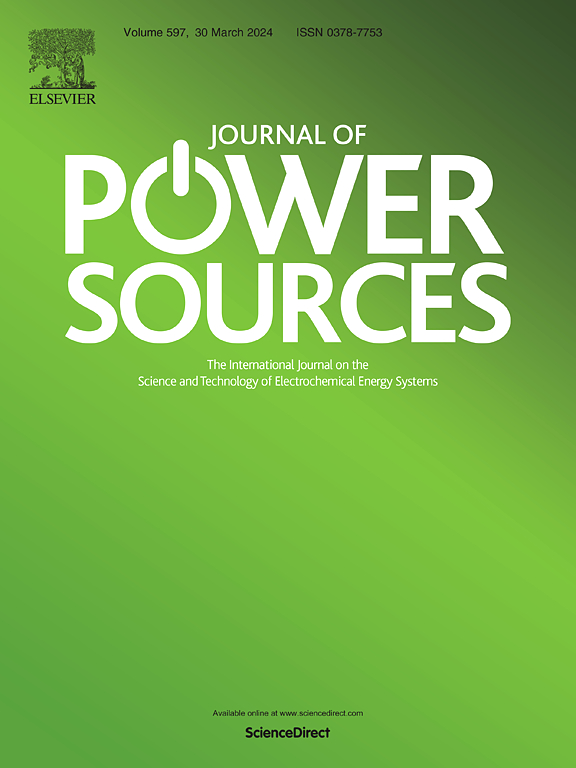Green synthesis and electrochemical optimization of reduced graphene oxide for high-performance supercapacitors
IF 7.9
2区 工程技术
Q1 CHEMISTRY, PHYSICAL
引用次数: 0
Abstract
Supercapacitors are vital for next-generation energy storage, but achieving a balance between energy and power density remains a challenge. This study presents a green and scalable method for synthesizing reduced graphene oxide (rGO) using palm oil leaf extract as an eco-friendly reductant. Beyond sustainability, the work systematically investigates the influence of mass loading on electrochemical performance to identify an optimal configuration. Structural characterization reveals that the green reduction route promotes graphitization and reduces layer stacking, enhancing conductivity and ion transport. Among all samples, rGO-C exhibits the most balanced behavior, delivering a specific capacitance of 121.72 F g−1 at 0.5 A g−1, with 80.1 % retention over 1-5 A g−1 and a high Cdl of 19.97 mF cm−2. Notably, rGO-C also retains 90.7 % of its capacitance after 5000 cycles, demonstrating excellent long-term stability. These findings highlight the potential of agrowaste-derived reductants in fabricating high-performance, sustainable supercapacitor electrodes.

高性能超级电容器还原性氧化石墨烯的绿色合成及电化学优化
超级电容器对下一代能量存储至关重要,但实现能量和功率密度之间的平衡仍然是一个挑战。本研究提出了一种绿色且可扩展的方法,以棕榈油叶提取物作为环保还原剂合成还原性氧化石墨烯(rGO)。除了可持续性,该工作系统地研究了质量负载对电化学性能的影响,以确定最佳配置。结构表征表明,绿色还原路径促进石墨化,减少层堆积,增强电导率和离子输运。在所有样品中,rGO-C表现出最平衡的行为,在0.5 a g−1时提供121.72 F g−1的比电容,在1-5 a g−1时保持80.1%,高Cdl为19.97 mF cm−2。值得注意的是,rGO-C在5000次循环后仍保持90.7%的电容,表现出出色的长期稳定性。这些发现突出了农业废弃物衍生还原剂在制造高性能、可持续的超级电容器电极方面的潜力。
本文章由计算机程序翻译,如有差异,请以英文原文为准。
求助全文
约1分钟内获得全文
求助全文
来源期刊

Journal of Power Sources
工程技术-电化学
CiteScore
16.40
自引率
6.50%
发文量
1249
审稿时长
36 days
期刊介绍:
The Journal of Power Sources is a publication catering to researchers and technologists interested in various aspects of the science, technology, and applications of electrochemical power sources. It covers original research and reviews on primary and secondary batteries, fuel cells, supercapacitors, and photo-electrochemical cells.
Topics considered include the research, development and applications of nanomaterials and novel componentry for these devices. Examples of applications of these electrochemical power sources include:
• Portable electronics
• Electric and Hybrid Electric Vehicles
• Uninterruptible Power Supply (UPS) systems
• Storage of renewable energy
• Satellites and deep space probes
• Boats and ships, drones and aircrafts
• Wearable energy storage systems
 求助内容:
求助内容: 应助结果提醒方式:
应助结果提醒方式:


